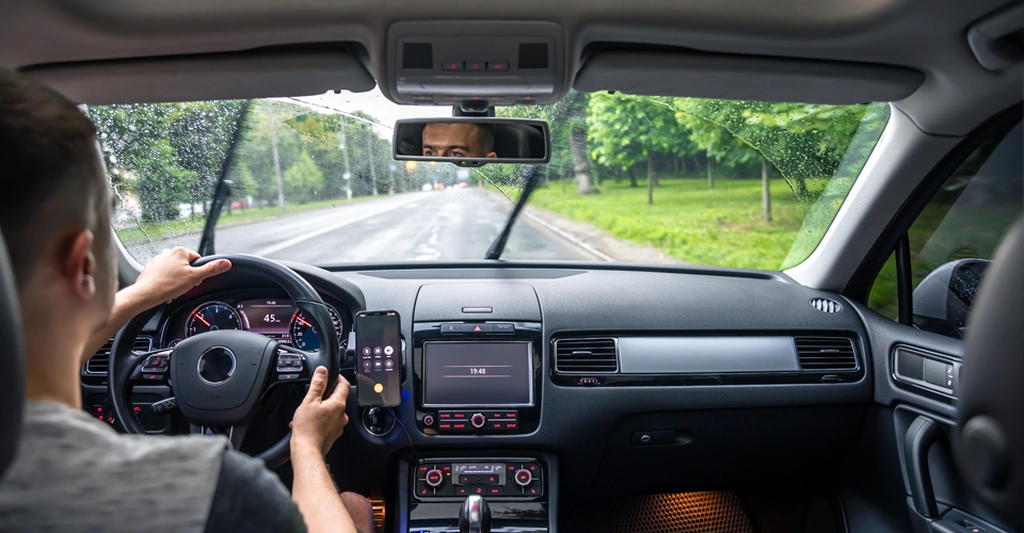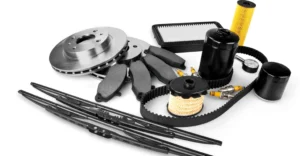When it comes to driving safely, how you hold the steering wheel matters more than most people realize. For decades, drivers were taught to position their hands at 10 and 2 just like on a clock. But with the rise of airbag technology and modern power steering systems, that old advice is not only outdated it can be dangerous.
In this guide, we’ll walk through the safest and most effective steering techniques used today, explain why the 10 and 2 position is no longer recommended, and share practical tips to help you stay in control behind the wheel.
Why 10 and 2 No Longer Works
Before the 1990s, driving instructors commonly taught learners to hold the wheel at the 10 o’clock and 2 o’clock positions. This made sense in older cars without power steering, where extra leverage was needed to make tight turns. It also gave drivers quick access to turn the wheel in either direction without moving their hands.
However, the game changed with the introduction of driver-side airbags. These life-saving devices deploy from the centre of the steering wheel at explosive speeds up to 320 kilometres per hour. If your hands are on the upper part of the wheel (especially at 10 and 2 or 12 o’clock), the airbag can violently push your hands into your face, causing severe injuries such as:
- Facial fractures or concussions
- Dislocated or broken fingers
- Torn skin or even partial amputations
Today’s airbags are designed to deploy upward and outward so the top of the wheel has become the danger zone.
The Safest Steering Position: 9 and 3
Most modern safety experts, including the National Highway Traffic Safety Administration (NHTSA), recommend placing your hands at the 9 o’clock and 3 o’clock positions. This keeps your arms clear of the airbag deployment path and gives you the most balanced and responsive control of the vehicle.
Benefits of 9 and 3:
- Better stability for emergency manoeuvres
- Full range of motion (up to 180 degrees) with minimal hand movement
- Protection from airbag-related injuries
- Improved ergonomic comfort, especially on long drives
When holding the wheel, keep your thumbs resting along the outer rim, not hooked inside. This allows your hands to slide away safely if the airbag deploys.
Push and Pull vs. Hand-Over-Hand Steering
In addition to hand placement, the technique you use to steer matters too especially when navigating corners, making U-turns, or recovering from a skid.
Push and Pull Technique
This method involves alternating movements between your hands without crossing them over the steering wheel. It’s widely recommended for both safety and smoothness.
How it works:
- To turn right: Use your right hand to pull the wheel down from 12 to 6, while your left hand pushes up from 6 to 12.
- For a left turn: Reverse the motion.
Why it’s recommended:
- Keeps both hands on the wheel
- Reduces the chance of injury in case of airbag deployment
- Smooth, controlled steering ideal for all speeds and new drivers
Hand-Over-Hand Technique
This more aggressive turning method is typically used at low speeds or during tight parking maneuvers.
How it works:
- One hand pulls the wheel down while the other crosses over it and continues the motion.
When to use it:
- Low-speed turns, like parking
- Quick recovery from skids
- Never during high-speed turns or when airbags may deploy
One-Handed Driving: A Dangerous Habit
Some drivers, especially on long highway drives, may rest one hand on the wheel or even use their knees. This dramatically reduces your control and increases your risk in emergencies. If you need to change positions, consider shifting to 8 and 4 but only during steady cruising. When in traffic or navigating bends, always return to 9 and 3.
Modern Support: Power Steering and ADAS
Today’s vehicles often come equipped with Electric Power Steering (EPS), which reduces the physical effort needed to steer, especially at low speeds. It adapts to your speed and driving conditions, providing firmer control on highways and lighter input for city parking.
Many newer vehicles, such as the Wuling Almaz RS and other advanced models, also feature Advanced Driver Assistance Systems (ADAS), which use sensors and cameras to help drivers maintain lane position, avoid collisions, and steer more safely. These technologies complement proper driving techniques but never replace them.
Practical Tips for Safer Steering
- Avoid gripping the top of the wheel (10–2 or 12 o’clock)
- Keep both hands on the wheel as much as possible
- Use push-pull for everyday driving and hand-over-hand only at low speeds
- Don’t hook your thumbs inside the wheel rim
- Use your vehicle’s tech (like EPS or lane keep assist) as support, not a substitute
- Stay alert avoid distractions like phones or adjusting controls mid-turn
Final Thoughts: Safe Steering Is Smart Driving
Driving may feel second nature, but even small habits like how you grip your wheel can have a major impact on your safety. Updating your steering technique to match modern vehicle safety standards is a smart, proactive move every driver should make.
At MotorHub, we believe safer drivers make for safer roads. Whether you’re behind the wheel of a city runabout or a high-performance SUV, steering correctly helps protect you, your passengers, and everyone else on the road.
Looking for expert car service or diagnostics?
Trust MotorHub’s experienced mechanics for everything from power steering issues to wheel alignments and ADAS calibration. Book your service online or visit a MotorHub partner near you.
This article is intended for a global audience. For readers in the UAE, MotorHub partners are equipped with the latest diagnostic and safety tools to help you drive smarter and safer.



